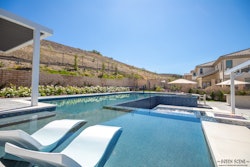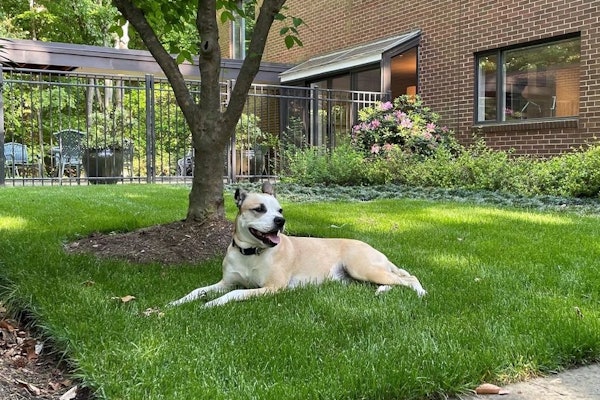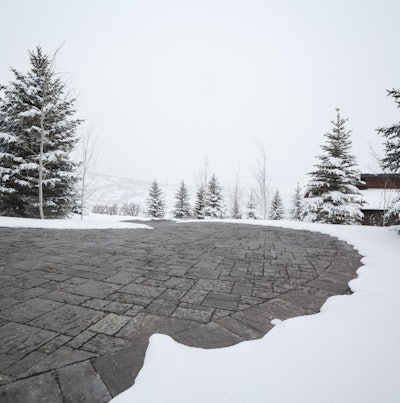 Photo: Belgard
Photo: BelgardWhen you’re creating an outdoor living space for your customer, naturally you want to install a hardscape that can last a lifetime, but the region you’re working in and the materials you choose to use will affect the hardscape’s lifespan.
“All products have a lifecycle, it’s really based on the hardness of it primarily,” says Joe Raboine, director of residential hardscapes with Belgard. “If you look at granite and certain limestones, those are extremely durable and will be around potentially for centuries but there’s some that could be really affected by freeze thaw.”
Freeze thaw cycles and sunlight are the two biggest factors that wear on hardscape materials. Heavy salting can also deteriorate almost any material.
“Sealers, in general, they’ll keep any water out of the paver, which is really the culprit, especially saltwater that gets in there and chemically reacts and starts to break it down,” Raboine says. “If you can keep any kind of water out for freeze thaw issues and/or salt, it’s a positive thing for the longevity of it. That would hold true for stone or clay pavers.”
He says there is a market for sealers, as customers are willing to pay more for them if they know it will extend the lifecycle and durability of their hardscape.
“More than ever, consumers are absolutely wanting, not even low-maintenance, they want maintenance-free, so I would definitely offer cleaning and sealing as part of an upsell, or even going back to past clients and offering it to them,” Raboine says.
Raboine advises asking dealers or retailers about the lifecycle of the hardscaping product they’re considering and if they have any examples of it installed. He says that while concrete pavers must meet ASTM (American Society for Testing and Materials) standards, it is tougher to be assured that materials like natural stone products will hold up long term.
Solid materials
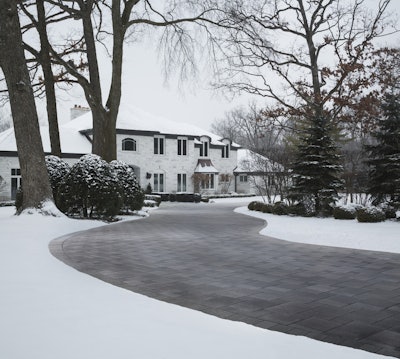 Photo: Belgard
Photo: BelgardIf you’re looking for a material that is well suited for any region in the country, Raboine says its concrete pavers.
“Concrete pavers are the most stable in any environment because you can control and engineer them so consistently and we know the process of how they’re made,” he says.
Other stable hardscaping materials are porcelain pavers, granite pavers and clay pavers.
With porcelain pavers, they tend to be harder than most granites and don’t need to be sealed. However, it is on the higher end of price points.
“If someone wants something that will truly never change and never needs to have anything done to it, it’s a great product for that,” Raboine says.
Granite pavers are very durable but also expensive. Clay pavers have ASTM standards as well that provide guidance as to which clay paver will do well in a given application environment.
Questionable materials
While there’s no hardscaping material that shouldn’t ever be used, there are some that shouldn’t be installed in certain areas. Raboine says sandstone shouldn’t be used where it’s cold, as water will get in the pores and delaminate the top, slowly wearing it away each year.
The durability of limestone, sandstone and travertine really depend on where the stone is being quarried. This typically isn’t a problem when the materials are sourced from local quarries where they conduct density testing but purchasing hardscape products from overseas can be risky.
“We’re seeing a lot of this in Florida and Texas where it’s coming in from Turkey or China, but if it’s really inexpensive, that’s when you’re taking a risk,” Raboine says. “It may be fine but since you don’t know the history of it, it could fall apart in a year or two. Same thing hold trues with things like porcelain tiles. Know where the source is, make sure that there’s a company that stands behind it and there’s history there.”
Raboine says in the end, you get what you pay for, but a little bit of extra money and research can go a long way.
Regional challenges
In the Southeast, the sun and intense heat are obvious challenges but Raboine says sometimes there are more freeze thaw cycles in Georgia than in the North. He suggests investing in a denser product, as it won’t be as affected by the abundance of moisture.
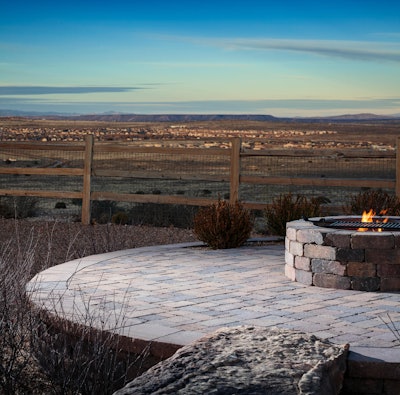 Photo: Belgard
Photo: Belgard“Just for maintenance and aesthetics, it’s better to have a denser product,” Raboine says.
In the North and Midwest, the freeze thaw cycle is the main issue to be mindful of. Raboine says you need a really strong mixed design for walls and pavers and to make sure that with clay pavers and natural stone that they are an extremely strong product that won’t absorb much.
In the Pacific Northwest, Raboine says the cold isn’t much of a problem, but contractors should be mindful of where downspouts are directing water, as these can easily become places of wear.
For the Southwest, it’s best to deal with the intense heat by not installing dark pavers.
“The best rule of thumb is whatever the products are, the contractors do their research and make sure, especially if it’s something they’re unfamiliar with, where it’s coming from and what kind of warranty does it have,” Raboine says.
He says some of the questions landscape contractors should ask include what the absorption rate is, the heat factor, warranty and suggested maintenance.


